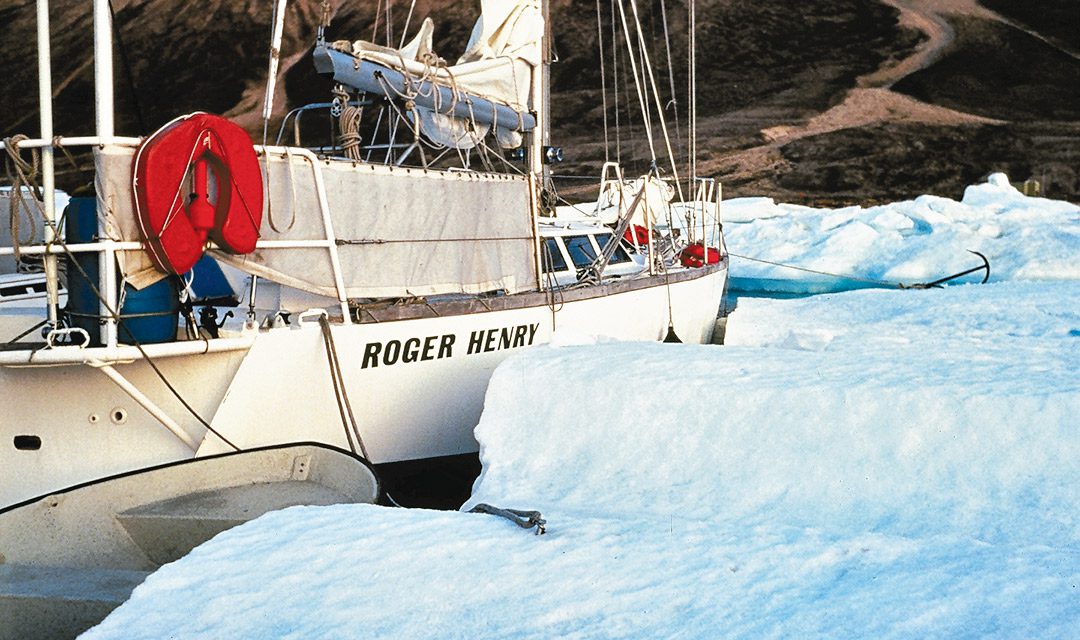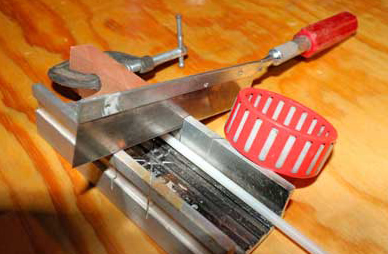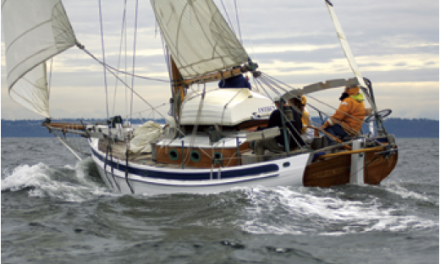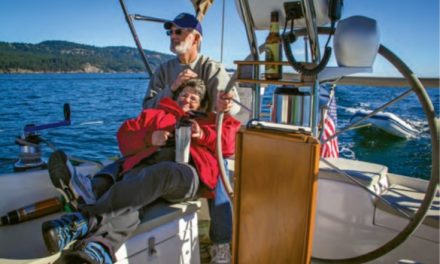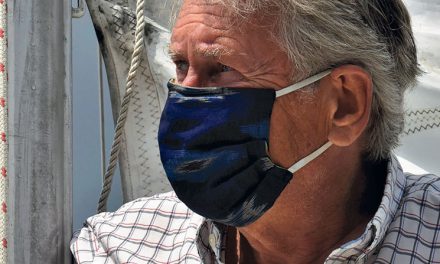Issue 138: May/June 2021
At the core of sound seamanship, aside from all the navigational, weather, and sailing skills required, lies a deep and thoughtful preparedness for all contingencies. At sea, what can go wrong will. On board our Roger Henry this translates into back-ups for our back-ups. I take this so far that I should hang a sign above our equipment locker: “The Department of Redundancy Department.”
Regarding ground tackle, this means a minimum of two spare anchors, extra chain, rode, swivels, shackles, and marking floats. When it comes to spare anchors, one can carry replacements of similar design to the primary anchor, or replacements of varied design. This flexibility provides the replacement should the primary hook be lost, as well as the ability to gain holding over varied types of bottom terrain and odd situations, whether or not the primary is lost.
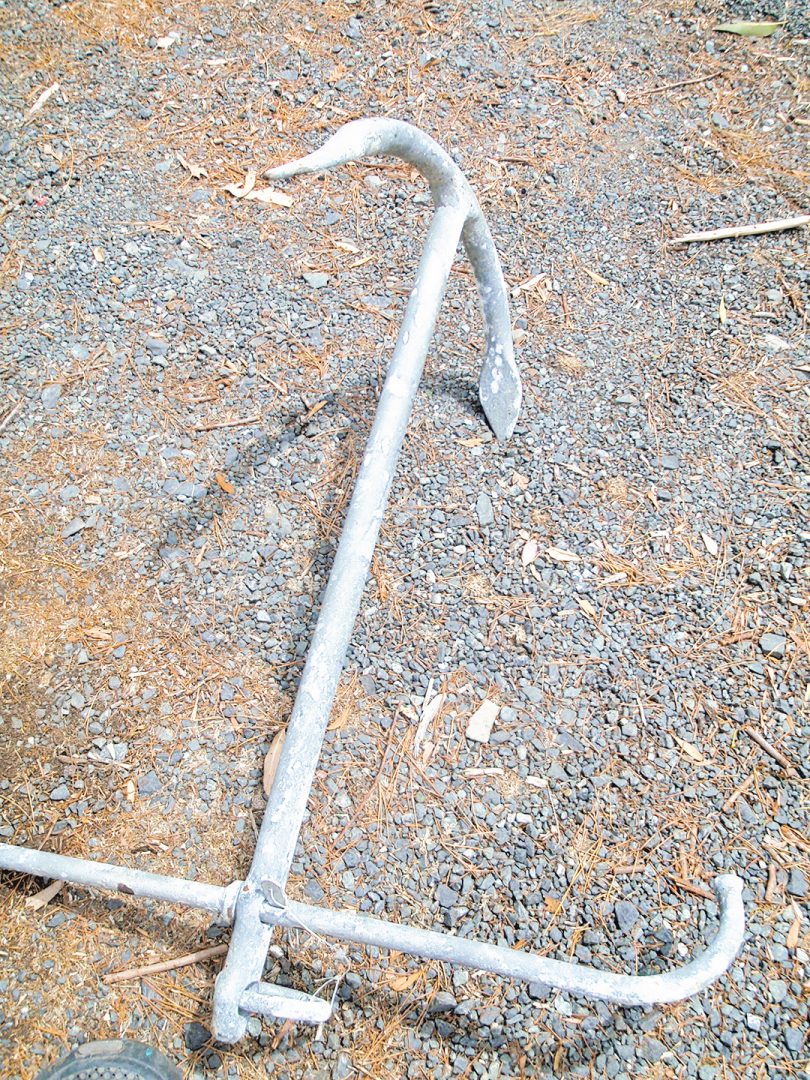
The tried-and-true fisherman anchor, this version with narrow flukes, is what Alvah turns to in specific difficult situations.
I chose the latter approach because, through a lifetime of sailing around the thornier edges of the world, I have often had to fall back on one of the oldest anchor designs known, the fisherman anchor (aka the admiralty anchor).
I’ll be the first to admit that it is a dangerously poor performer in soft mud, only moderate in sand, and too often trips itself in fluky winds and changing tides. But in its defense, the traditional fisherman can be short-scoped, it sets quickly, and stows flat in the bilge or rode locker, saving precious space.
The fisherman’s true raison d’être, though, lies in slate bottoms, boulder fields, thick kelp, and rubble where even the best modern anchors may leave you alarmingly awoken to things that go bump in the night.
As to the aforementioned odd situations, in the steep and deep canals of Chile near Cape Horn, you dare not actually anchor, as the depths close to shore are prohibitively precipitous, and the williwaws rip across exposed waters in excess of 100 knots. No anchor will hold! (Read Hal Roth’s After Fifty Thousand Miles for the gory details.)
But, if you are naturally literate and read the signs nature always provides, you will find that wind, however ferocious, cannot make a 90-degree bend. Thus, you find an arm perpendicular to the prevailing wind and anchor by color. That is, you search the rocky shoreline for fresh green leaves on stunted bushes and trees, which indicate a void in the paint-stripping winds. There you must pass as close to an off-lying rock or shallow ledge as you dare and from the stern throw a fisherman directly on top of it.
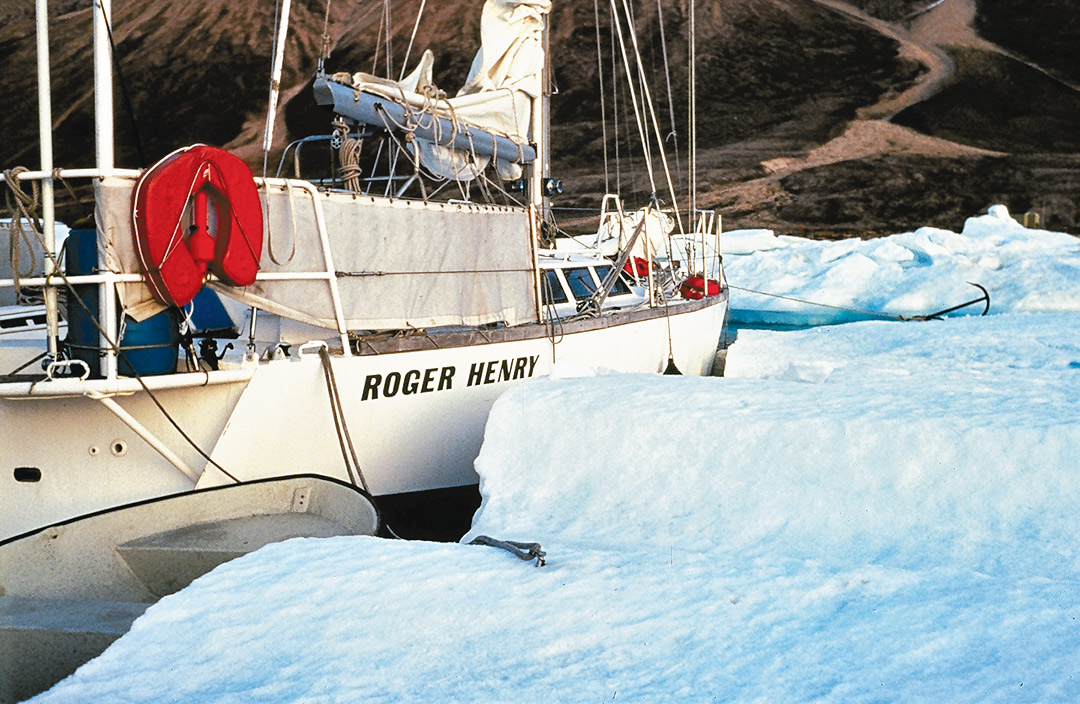
Roger Henry sidled up next to the ice, with her fisherman anchor firmly attached.
You nearly crash into the overhanging trees, snubbing off the fisherman at the last second and run a line around the strongest tree. Then you haul off just slightly on the fisherman’s rode. In my experience, while the waters not a hundred yards astern were whipped into a white foam, we could have lit a candle on deck. However, this proximity to hull-crushing rock requires complete confidence that the fisherman will hold you just slightly off.
Another admittedly odd situation is ice. When threatened with thickening ice in Arctic waters, we would seek shelter in a cul-de-sac of an iceberg or large ice pan. As long as our haven remained on the lee side of the drift, the pan would protect us from larger and more threatening bergs. We found the narrow-fluked style of fisherman to be as effective in holding to floating ice pans as a piton. With the fisherman tossed from the bow and an ice axe planted from the stern, we remained safely belayed until the pan turned towards the oncoming icebergs or broke up.
I mention this because there are two style of fisherman—the wide-fluked and the narrow. Of course, the wide fluke will hold better in mud or soft sand, but in these situations, we prefer to use our more efficient modern Rocna or backup CQR. Also, the wider flukes do not slip as easily into tiny cracks on smooth slate bottoms. I only exaggerate slightly when I claim that the fisherman could hold on a basketball court.
There is no denying that modern anchor designs are highly efficient, require no assembly, and stow conveniently on typical bow rollers. But to close with a simple analogy, I still believe it is better to be a belt-and-suspenders type of sailor than the two-belt type.
Alvah Simon and his wife, Diana, have sailed their 36-foot steel cutter Roger Henry to extreme latitudes and shared their adventures in Cruising World and in the gripping and lyrical memoir North to the Night.
Thank you to Sailrite Enterprises, Inc., for providing free access to back issues of Good Old Boat through intellectual property rights. Sailrite.com

